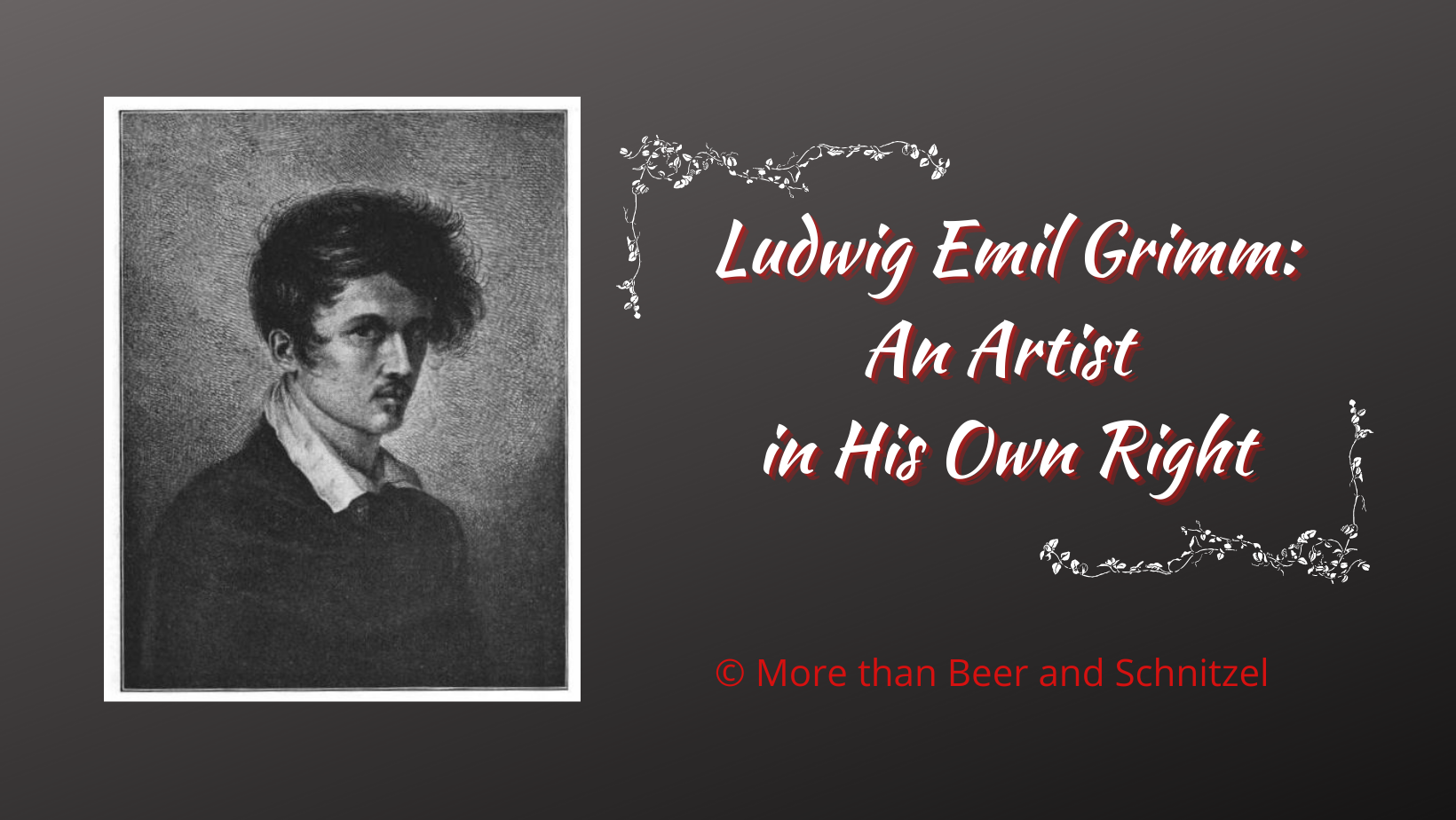The name Grimm probably sounds familiar to you, and you are thinking of fairy tales. Well, you are not wrong because Ludwig Emil Grimm is the youngest brother of the famous Grimm Brothers, Jacob and Wilhelm. (More about fairy tales here and Cinderella here.) But he was an artist in his own right, as a painter, engraver and etcher.


The Beginnings
Ludwig Emil Grimm was born on March 14th, 1790 in Hanau, and died April 4th, 1863 in Kassel. Other than working as an artist, he also held a professorship at the Art Academy in Kassel.
In 1807, Grimm started studying at the Art Academy in Kassel, received private drawing lessons, and got to know Clemens Brentano, Bettina von Arnim, Achim von Arnim, Werner Herschel, and Friedrich Carl von Savigny. At that time, Brentano and v. Arnim commissioned him to make illustrations for their publications: the folk song collection Des Knaben Wunderhorn, as well as for Kinderlieder, Zeitung für Einsiedler, and Goldfaden. (The Boy’s Magic Horn, Children’s Songs, Newspaper for Hermits, Gold Thread)
During his studies at the Art Academy in Munich from 1809 until 1814, Grimm specialized in etching though he also painted more. He was financially supported by his brothers, Brentano, and von Savigny.




Portraits and Illustrations
Grimm joined the army as a lieutenant in 1814 during the Wars of Liberation (Befreiungskriege) against Napoleon. When the wars ended in 1815, he went back to the arts, sponsored by a stipend. He traveled to Rome and through Southern and Western Germany. Through the connections he made and his friends had, he started to paint portraits of professors, doctors, and other scholars, which led him to also to portrait other known people, among them Heinrich Heine and Niccolò Paganini.
We probably know the portrait of his brothers Jacob and Wilhelm most as well as his etching of the “Märchenfrau” (fairy tales lady) Dorothea Viehmann. Many of his illustrations also appear in his brothers’ fairy tale collection Kinder- und Hausmärchen.






Other Art
In his art, oil paintings, etchings, and engraving, you can notice a multitude of influences. Most of his portraits were realistic but tended to go into the idealistic or romantic, with elements of Biedermeier. But you can also see the influence of Raffael and Dürer.






Der Scharfenstein
Below is a water color painting by Grimm depicting the Scharfenstein in Hesse. According to legend, a virgin was protecting a treasure hidden inside the mountain Scharfenstein. Every seven years she appears and sneezes seven times. The person who tells her “Gott helf” (God help) seven times, wins the virgin and the treasure. One time, a carter came by and said the good wish six times but he grew impatient and swore at her for the seventh time. She was never seen again.
Franz von Dingelstedt wrote the poem “Der Scharfenstein” in which he talks about the legend surrounding the mountain. You can read an English translation here.

Grimm Now
In 2012, the city of Hanau awarded the “Ludwig Emil Grimm Preis” for visual arts for the first time. The prize went to Hans Traxler, a German painter, illustrator, cartoonist, and children’s book author.
The Hanau hotel “Zum Riesen” in 2014 commissioned a statue of Grimm which now stands in front of the hotel and reminds of Grimm’s stay there for a New Years’ Ball in 1819. The bronze memorial was crafted by Joerg Eyfferth.
In 2016, the Wilde Kultur Birstein put on a musical called “Der wilde Grimm” which has the life, and more specifically the three weeks he spent in Birstein in 1820, as its topic. You can watch a trailer below.
Sources and Resources
All images from wikimedia commons, public domain, unless otherwise noted.


